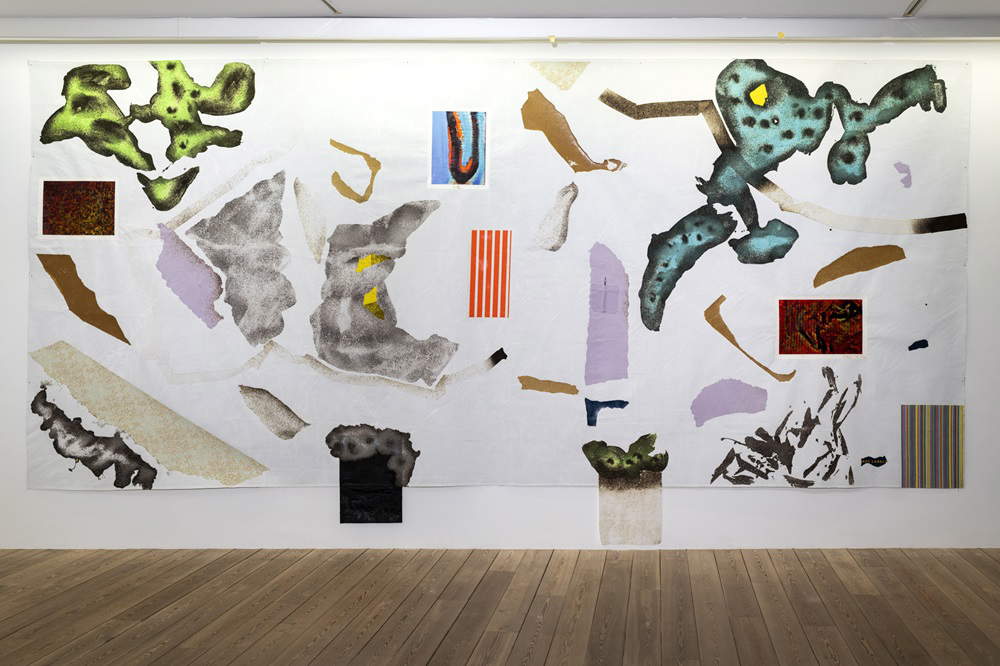Kunst Meran Merano Arte presents from June 2 to October 13, 2024, the group exhibition La Linea Insubrica, the first event in the three-year program The Invention of Europe: a tricontinental narrative (2024-2027), conceived and curated by Lucrezia Cippitelli and Simone Frangi. The exhibition marks the beginning of an exhibition journey that will explore the links between Europe, Africa, Latin America and Asia through six stages, including three group exhibitions and three monographic exhibitions. The program The Invention of Europe draws inspiration from Congolese philosopher Yves Valentin Mudimbe’s formula, “The Invention of Africa,” to critically examine the idea of Europe as an ideological and physical construction. Through this investigation, the project aims to illuminate the historical processes that have defined Europe and their impact on the contemporary world.
Linea Insubrica brings together eleven contemporary artists of European, African, and African diaspora origin in Europe: Liliana Angulo Cortés, Sammy Baloji, Binta Diaw, Abdessamad El Montassir, Ufuoma Essi, Alessandra Ferrini, Kapwani Kiwanga, Francis Offman, Vashish Soobah, Betty Tchomanga, and The School of Mutants. The exhibition focuses on the Insubric Line, a tectonic fault line that runs through Merano and emerged as a result of the collision of the European and African tectonic plates, which is why it also becomes symbolic of the complex relationships between Europe and Africa. The works presented explore themes of colonialism, extractivism and cultural identity through installations, videos, paintings, performances and sound interventions.
The itinerary features two projects conceived specifically for the exhibition: the priom is that of Binta Diaw (Milan, Italy, 1995) presents a fabric installation colored with carcadè, exploring Italy’s colonial relationship with Africa during the fascist period. The second is by Francis Offman (Butare, Rwanda, 1987), who uses coffee to trace imperialist routes and tell stories of exploitation, linking personal memories of Rwanda and experiences in Italy.
As for works not specifically executed for La linea insubrica, Alessandra Ferrini (Firenz, 1984), with the video “Sight Unseen,” examines the figure of Omar Al-Mukhtar, leader of the Libyan resistance against the Italian occupation, while Abdessamad El Montassir (Boujdour, Morocco, 1989) recounts Western Sahara through the installation “Trab’ssahl,” which invites reflection on the traumatic memory of the conflict. Liliana Angulo Cortés (Bogota, 1974) and Kapwani Kiwanga (Hamilton, Canada, 1978) work on archival materials to question codes of subjugation. Angulo Cortés explores José Celestino Mutis’ botanical expedition to Nueva Grenada, while Kiwanga reinterprets the floral compositions of African independence ceremonies.
Linea Insubrica includes a rich public program with guided tours, performances, sound interventions and artist film screenings. The opening features a performance by Vashish Soobah (Sicily, 1994) and themed DJ set. Among the screenings, Aequare: the Future that Never Was by Sammy Baloji (Lubumbashi, Congo, 1987) and Is My Living in Vain by Ufuoma Essi (London, 1995) will offer further food for thought.
On Sept. 21, in collaboration with Transart, The School of Mutants collective will organize a parade and discussion series in Merano, while Betty Tchomanga (Charente-Maritime, 1989) will present a dance solo dedicated to the mythological figure of Mami Wata. Alessandra Ferrini will activate her work in the exhibition with performances of words, sounds and images.
Students from the department of Visual Cultures and Curatorial Practices at the Brera Academy of Fine Arts in Milan will conduct research and publish a biweekly newsletter on the themes of the exhibition. In addition, graphic designer Montasser Drissi will follow the three-year program of Kunst Meran Merano Arte.
Pictured: Francis Offman, Untitled (2024)
 |
| Kunst Merano inaugurates curatorial program exploring relations between Europe and Africa |
Warning: the translation into English of the original Italian article was created using automatic tools. We undertake to review all articles, but we do not guarantee the total absence of inaccuracies in the translation due to the program. You can find the original by clicking on the ITA button. If you find any mistake,please contact us.